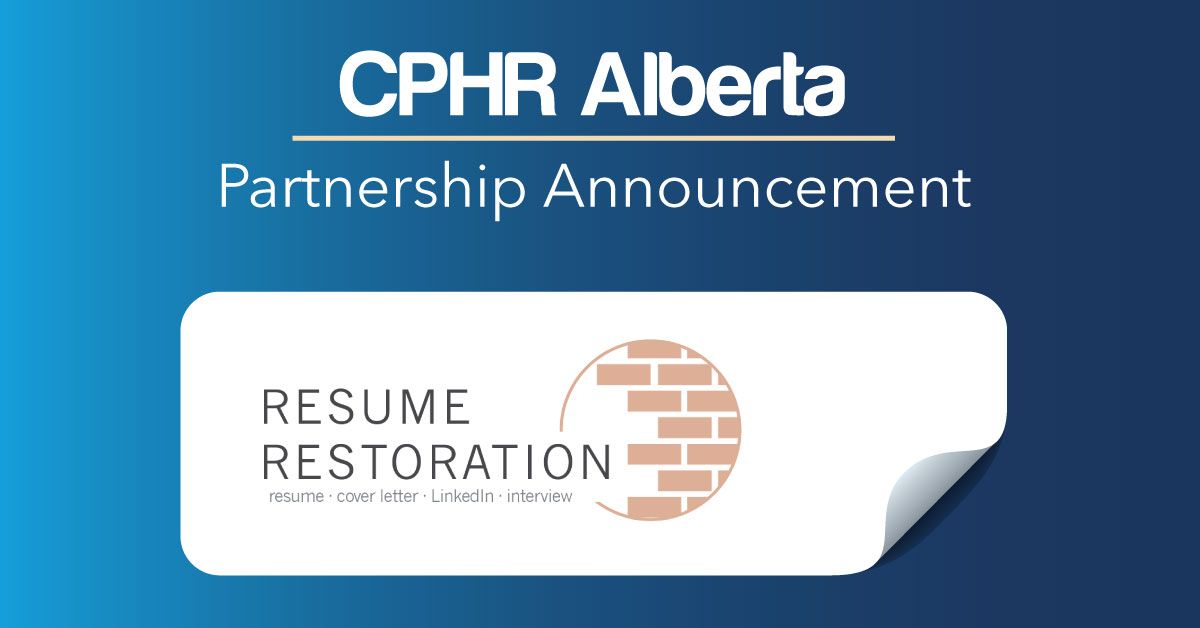
CPHR Alberta Announces Partnership Renewal with Resume Restoration

CALGARY, Alberta – CPHR Alberta, a professional association dedicated to strengthening the human resources profession, is excited to announce a partnership renewal with Resume Restoration, a Calgary-based company that provides career transition support to job seekers.
Led by Senior HR professional Clementine Crooks, MA, CPHR and Graphic Designer Erin Wallace, BEd, BA, Resume Restoration offers their clients 1:1 assistance and support with resume content revisions and professional formatting, interview preparation, cover letters, and LinkedIn optimization. Using their knowledge of the Alberta job market, the Resume Restoration team offer knowledgeable advice on job search to help their clients land that next role.
“As the market continues to fluctuate, now more than ever before professionals are understanding the need to submit impactful applications that sell their accomplishments, experience, and value-add. At Resume Restoration we pride ourselves on providing a service that is affordable, professional, and prompt. As a long-standing member of CPHR, I am thrilled to be partnering with CPHR and offering members 10% off of all of our services: resumes, LinkedIn profile updates, cover letters, and interview preparation”, says Clementine Crooks.
Resume Restoration is the resume service of choice for the Association of Professional Engineers and Geoscientists of Alberta (APEGA), the Canadian Sports Institute - Calgary (CSIC), TCAE, the Alberta International Medical Graduate Association (AIMGA) and many other Professional Membership Organizations.
Register for the upcoming CPHR Alberta Law Conference on February 16, 2023 where Resume Restoration will be hosting a session on Navigating and Mitigating the Risky Business of Terminations in collaboration with Jonathon Ward, Employment lawyer at DLP Piler. Register here.
“The services provided by Resume Restoration are the perfect resource for members of all career levels, from students to executives. Having an updated resume and cover letter and the tools developed through the exceptional interview preparation our members will have the competitive edge employers are looking for”, says Ioana Giurca, CEO of CPHR Alberta.
CPHR Alberta members can access the 10% discount using the promo-code available in your member portal. Visit “Partner Resources and Service” in the Resources section under the Menu in your member portal.
“I highly recommend Restoration Resume! As an HR professional I know the importance of a well written and designed resume. However, when it was time to dust off my resume and begin applying to new opportunities, I found myself unable to articulate my skill set in a condensed professional fashion. In hopes of putting more life into my outdated resume I turned to this company. Clementine worked closely with me and was able to help highlight all relevant and relatable skills. Erin’s formatting gave me the assurance that my resume will stand out in a crowd. I now apply to all high-level positions with confidence. To anyone who is considering making this investment I can ensure you it is worth it!”
- Senior HR Professional
The views and opinions expressed in this blog post belong solely to the original author(s) and do not necessarily represent the views and opinions of CPHR Alberta.





